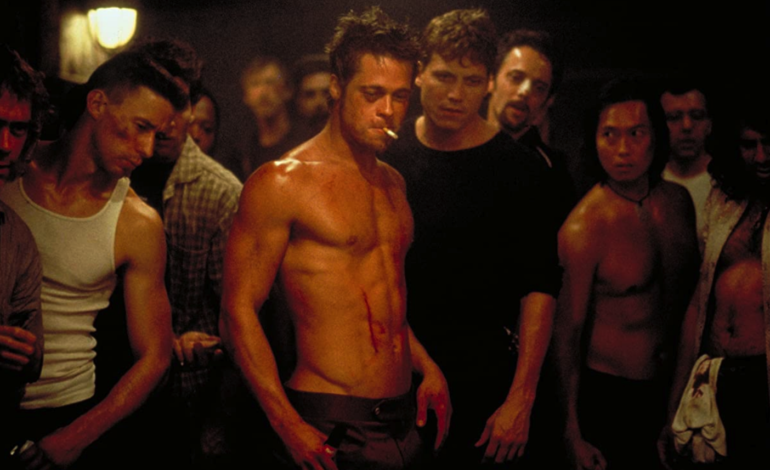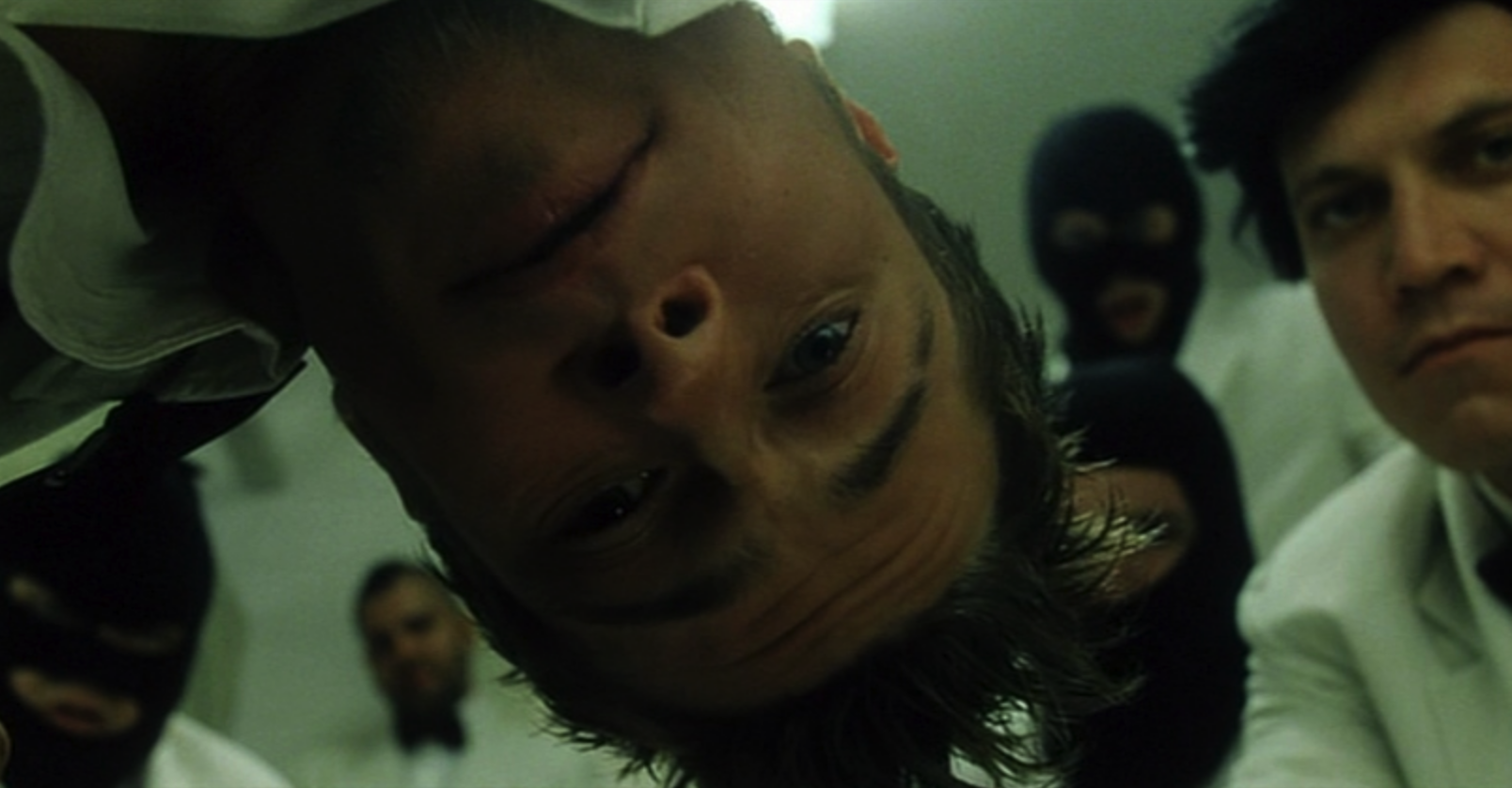

The COVID-19 pandemic has sent many of us on an existential journey of reevaluating what defines us and gives us value. This year, we’ve experienced one of the largest global recessions since the Great Depression resulting in record-breaking unemployment rates and business closures turning our entire economy on its head. Whether we like it or not, our lives are completely dedicated to consumer capitalism making us entirely dependent on buying and selling our goods and services at competitive prices. By assessing our value and learning exactly who we really are, we render ourselves down to our relationship with miscellaneous material stuff that essentially has nothing to do with our existential being. David Fincher’s film adaptation of Chuck Palahniuk’s 1996 novel Fight Club (1999) offers us an anti-capitalist critique of the fallacy of the American Dream through hyperbolic tropes of toxic masculinity.
Fight Club takes us through the depleted psyche of our nameless narrator-protagonist (Edward Norton), an IKEA-loving insomniac desperately seeking a solution for his sleep deprivation. Stumbling into various support groups for folks with diseases like testicular cancer and tuberculosis, the narrator finds relief in the outpour of emotional expression that helps him fall asleep at night. Our protagonist is a rather underwhelming white-collar American – he’s visually forgettable and lifelessly sallow, often lit in a pasty cool hue. His refrigerator, filled with condiments and no food, is a refection of the sapped person he has come to be.
Coming home from work, the narrator finds that his condo has exploded. Seeing his IKEA-catalogue items is blown to pieces and dispersed along his street, the narrator calls up Tyler Durden, a soap salesman he met on a plane during a work-related trip. Tyler is everything that the narrator is not. He’s confidently and charismatically bold, often wearing a red leather jacket and bold prints, and lit with a flattering golden hue. Tyler agrees to meet with the narrator at a nearby bar after the explosion. After a few pitchers of beer, the two go to the parking lot where Tyler asks the narrator to hit him as hard as he can. He asks “how much can you know about yourself if you’ve never been in a fight?”.


The sloppy fistfight in the bar’s wet parking lot marks the dawn of what will become Fight Club. Every week, the two beat each other up in the streets, garnering the attention of many men passing by. Growing into an established organization, Tyler becomes the face and philosophy of Fight Club. The three infamous rules that we take away from the film are 1. You do not talk about Fight Club, 2. You do not talk about Fight Club, and 3. F*ck the rules. Tyler is the ultimate rule-breaker which makes him stand out against the backdrop dull society. Much of Tyler’s philosophy stems from his distaste for society’s dependence on materialism to give their life meaning. His existentially nihilistic idea of existence appeals to these men who join Fight Club in order to relieve themselves by fighting each other, expelling any internalized aggression. Members are able to find some kind of catharsis in response to their being just another cog in the machine instead of fulfilling the big dreams they were promised by advertisements on TV.
While Fight Club starts out as just a casual weekly meeting, it eventually develops into something much larger called Project Mayhem. Without the narrator’s knowledge, Tyler has developed Fight Club into an anarchist organization that has chapters sprouting all over the country making Project Mahem a national franchise. Members are given various “homework assignments” that involve destroying corporate property among other pranks to solidify their position against corporate America and the consumerist ideology. These homework assignments end up having a real purpose, turning Project Mahem into a terrorist organization plotting to blow up various credit card companies with the ultimate goal of setting everyone free of the American Dream by resetting debt to zero.
Throughout the film, there seems to always be some sort of threat to manhood. Foreshadowed by the testicular cancer support group, the balls of this country’s men seem to always be at risk. Once Project Mayhem takes flight, anyone who tries to expose the organization will pay with their balls. In this way, the film quite directly aims to emphasize the value of manhood by this overarching threat that it’s something that can be easily taken away. Fight Club and Project Mayhem become a security blanket for their men and their male identity. The exaggeration of this macho animalistic aggression bonds this brotherhood of disenfranchised men who were silently desperately looking for meaning in their seemingly meaningless existence.


The audience receptions of Fight Club are an interesting thing to consider when discussing its themes of hypermasculinity and anti-capitalism. The film was essentially a flop in theatres but after it was released on DVD in 2000, it’s sales went through the roof (I find this particularly ironic as an anti-capitalist product, it became a hot commodity thanks to capitalism). Since its release 21 years ago, Fight Club has gathered a fandom of folks who buy into its pseudo-glorification of masculine aggression and violence instead of seeing how it’s being grotesquely saturated to show how ridiculous it actually is. This portion of the film’s fandom that doesn’t seem to quite catch it’s anti-consumerist and anti-capitalist message buy into the image that is portrayed by Fincher’s rendering of Palahniuk’s story. This image is highly stylized and textually mirrors the image of what we know to be the American Dream. If anything, these Durdenites are a byproduct of the story’s satirical message that showcases how easy it is to make something that’s essentially a myth look so attractively attainable that we idolize it completely no matter how toxic it is. We are trapped in capitalism, essentially working to even make our own critiques of capitalism into a commodity to be consumed. The American Dream is a warped limbo and all we can do is keep it moving or else we’re screwed. Overall, we’ve all been conditioned to have a little IKEA boy living in all of us, right?
